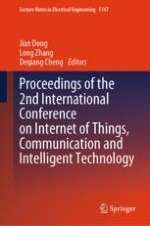2024 | OriginalPaper | Buchkapitel
Intelligent Active Defense Methods for Mitigating Penetration Attacks on Power Grid Buffer Networks
verfasst von : Yunsong Yan, Wang Wang, Xiong Chen, Wei Wang
Erschienen in: Proceedings of the 2nd International Conference on Internet of Things, Communication and Intelligent Technology
Verlag: Springer Nature Singapore
Aktivieren Sie unsere intelligente Suche, um passende Fachinhalte oder Patente zu finden.
Wählen Sie Textabschnitte aus um mit Künstlicher Intelligenz passenden Patente zu finden. powered by
Markieren Sie Textabschnitte, um KI-gestützt weitere passende Inhalte zu finden. powered by
